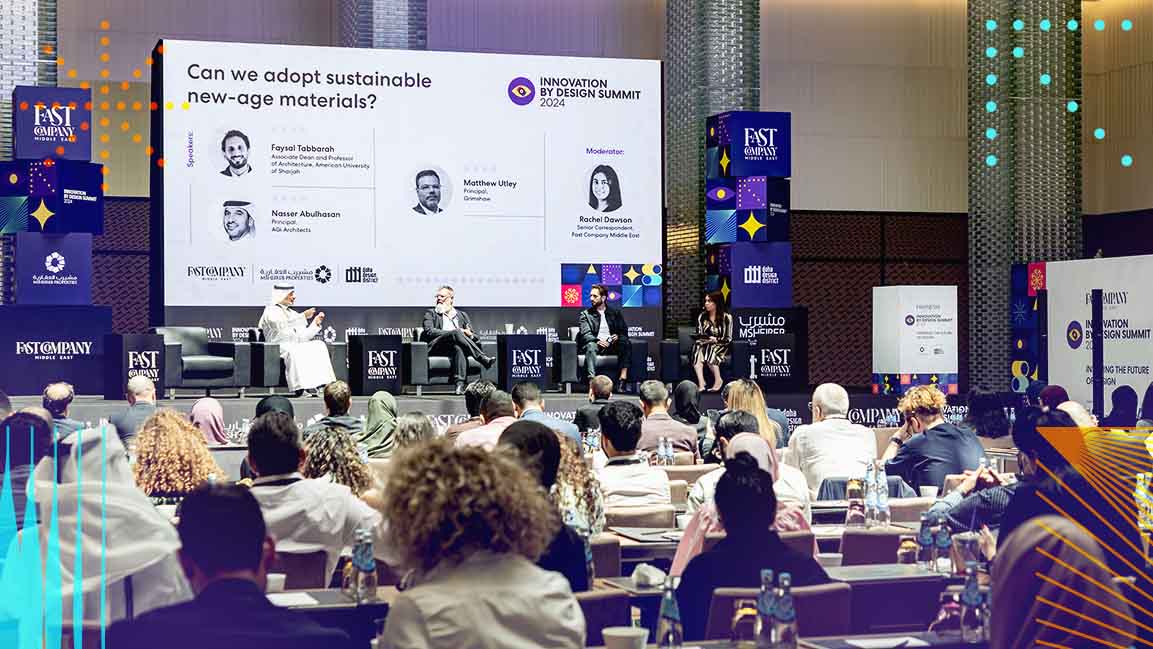- | 8:00 am
These fridges are powered by solar panels and ice batteries
Amped Innovation developed a solar-powered fridge to be deployed in rural Africa, where millions of people have limited electricity.
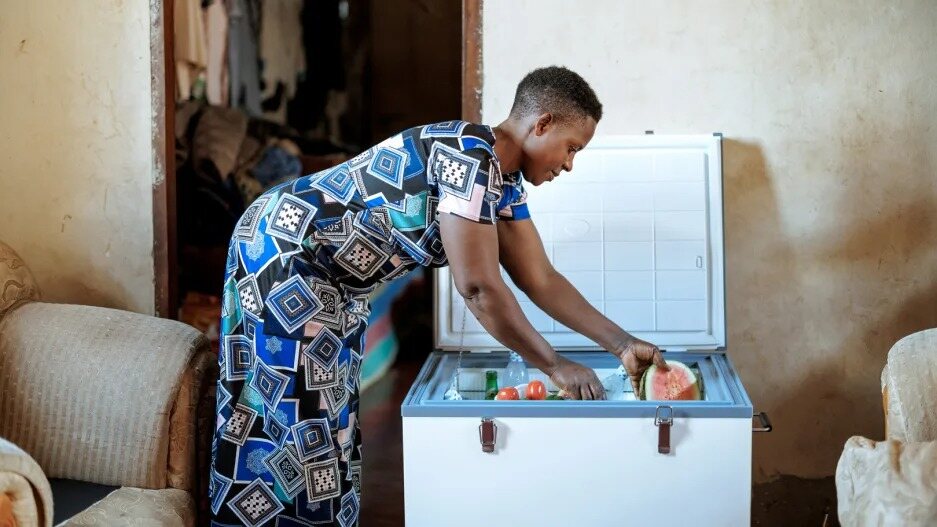
Until recently, a store selling groceries in a village in Zambia couldn’t sell cold drinks: It didn’t have access to electricity to power a fridge. But the store now has a solar panel on the roof connected to a solar fridge that’s stocked with drinks and ice. The business owner has nearly doubled overall sales.
The store was one of the first to get a new fridge designed by Amped Innovation, a Bay Area-based company that’s now scaling up production of the appliance. They wanted to help tackle a widespread problem—even though the energy grid is quickly growing in Africa, millions of people still aren’t connected or have to deal with frequent outages.
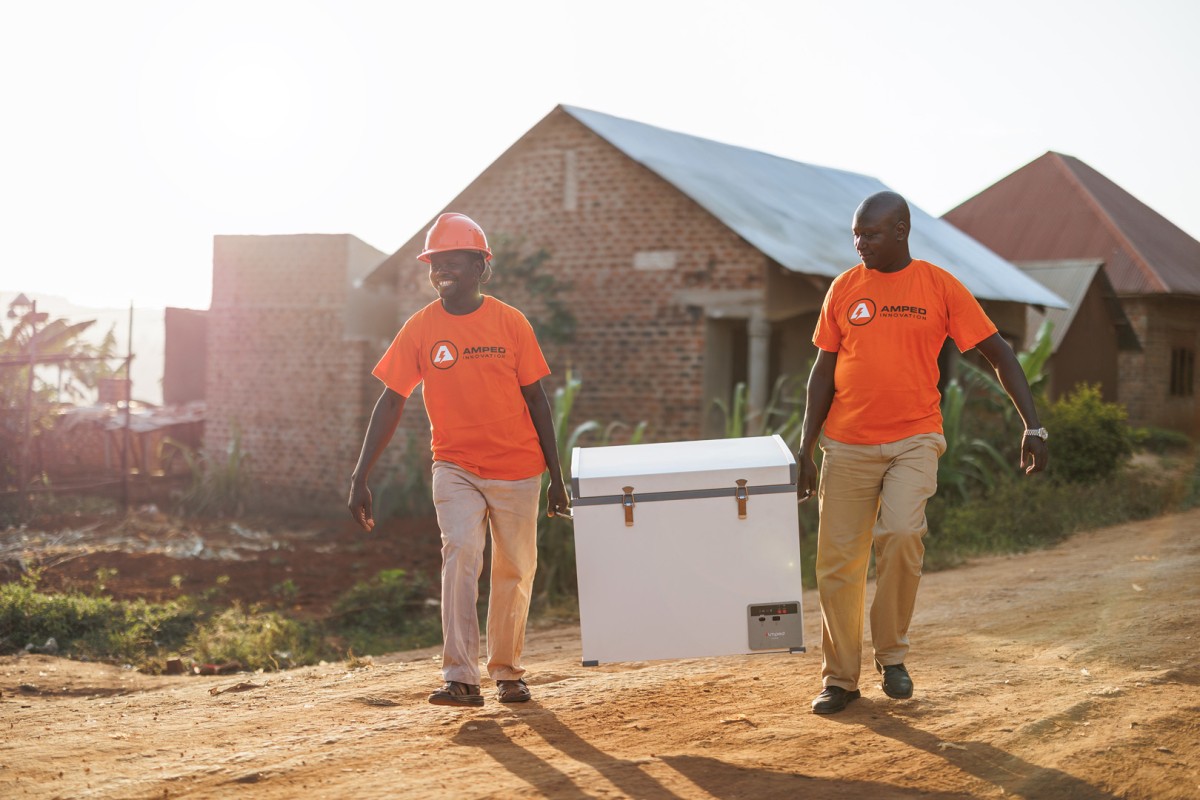
“There’s those who have absolutely no access to power—and there are still hundreds of millions of customers in that boat—and then there’s the weak grid. If you combine all of them together, it’s a billion people,” says Amped cofounder and co-CEO Andi Kleissner.
Without a refrigerator, or with spotty power, healthcare clinics can’t safely store some medicines and vaccines. More food gets wasted; farmers throw out a large percentage of food before it even gets to market. Nearly half the fish caught each day in sub-Saharan Africa is wasted because it can’t reliably be stored. Families have to spend time each day shopping for perishable food.
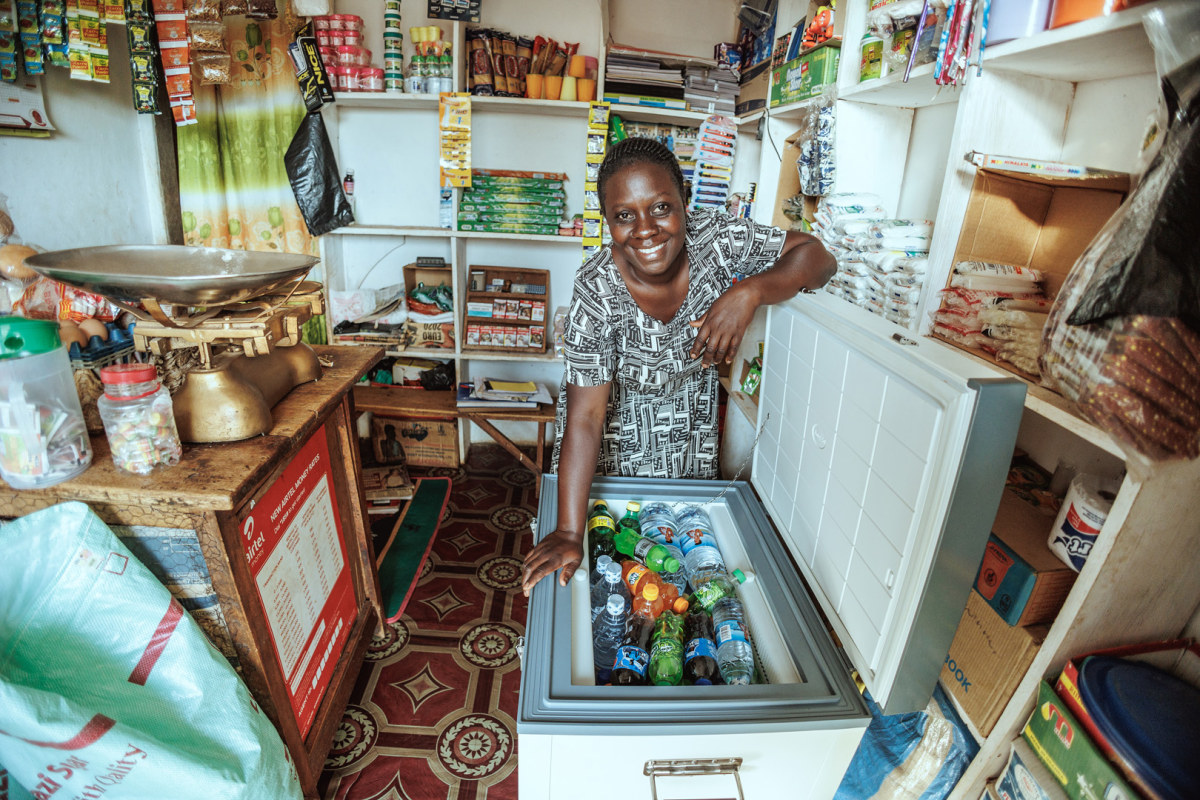
The new fridge, called the EasyFreeze, isn’t the first designed to run on solar power. But other options can cost between $1,300 and $2,000. Amped, which already sells home solar systems in developing countries, wanted to develop a more affordable refrigerator. Backed by a grant from Efficiency for Access, which was sponsored by Ikea Foundation and the U.K. government, it spent two years on a new design.
First, it’s as efficient as possible, and automatically uses less power if there’s not enough solar power available. “You have to have a really efficient appliance in order to get the size of your solar panel and battery down into a cost that makes sense,” says Kleissner. The design also has fewer components than other refrigerators. (It’s a simple chest, which can switch between being a fridge and a freezer, rather than having separate compartments.)
The designers also replaced an expensive lithium-ion battery with an “ice battery” that costs 95% less. Ice pouches with chemicals that can absorb and release heat are built into the wall of the unit. The solar power “recharges” the ice battery, which can then stay cold for 40 hours. If someone has spotty grid power, they can also plug the fridge into an outlet and charge it when electricity is available.
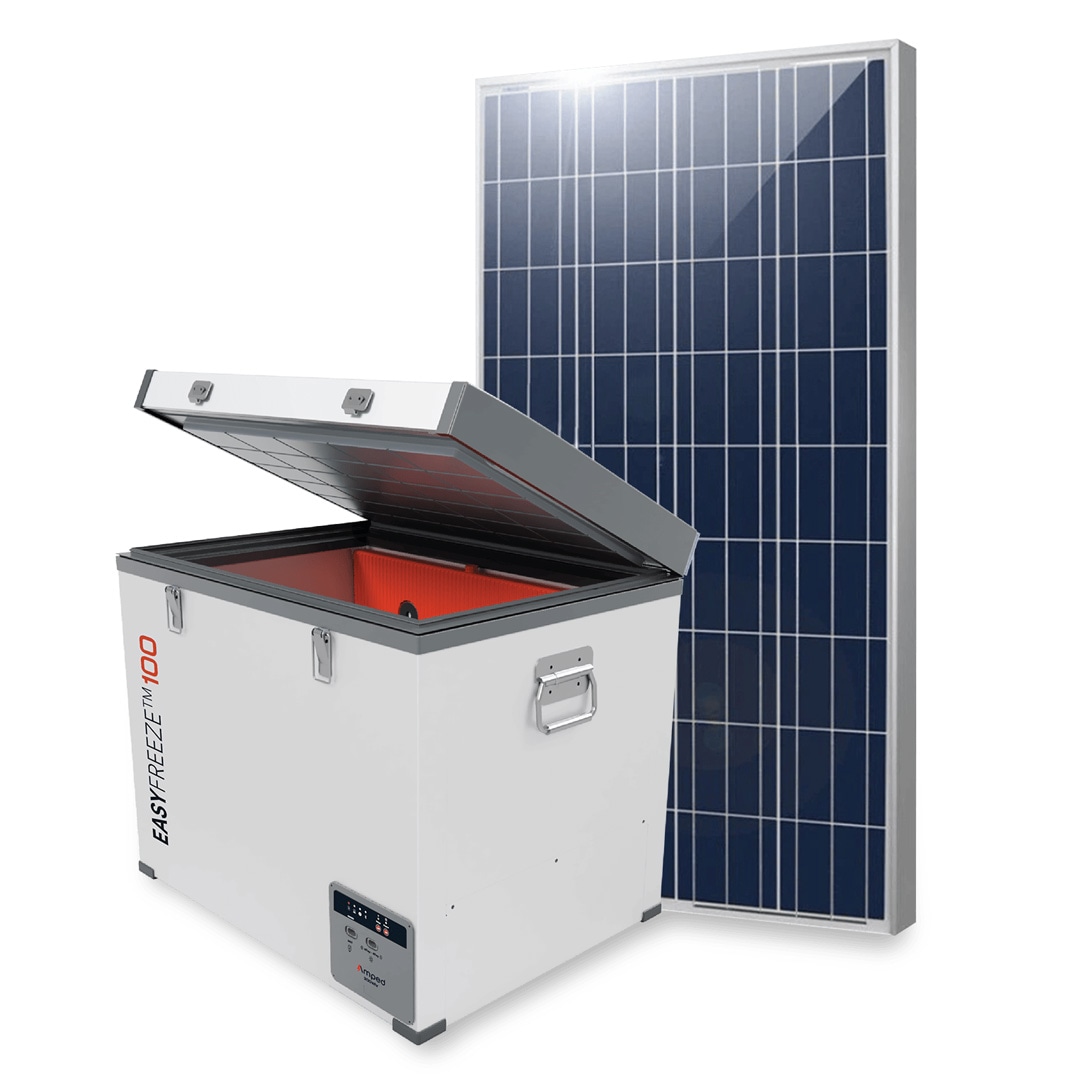
The equipment is assembled locally to avoid steep import fees. “No matter how innovative you are on the product, if you don’t consider every single cost from end to end to getting it out to rural customers in Africa, you’re not going to meet your targets,” says Kleissner.
The changes reduced the cost enough that the payback period for a small business can be less than a year. It’s still far from cheap—the local distributors who sell the fridge to customers can charge as much as $900, though Amped works with other partners to offer low-cost loans, and distributors offer additional financing. But if a business uses the appliance to sell ice, they can significantly increase their income.
Though businesses are likely to be the first customers, some families may also invest in the fridges and start to sell products like ice to their neighbors. “The line between a home and a business is a lot less clear in Africa,” Kleissner says. “Everyone’s trying to do a side hustle. So, if a household ends up buying a freezer, and it’s strong enough and powerful enough to make ice, then they’ll turn themselves into a business.”
There’s likely to be a need for solutions like this for a long time as countries in sub-Saharan Africa struggle to expand their electric grids; in some places, like Malawi, the grid currently relies on hydropower, which is being threatened as climate change increases drought. In rural areas that are getting access to electricity through solar microgrids, the fridges could help reduce demand on the microgrids.
The demand for the product and other off-grid appliances is strong, says Kleissner. “It’s crazy to me that the large companies like Samsung or LG aren’t spending the R&D dollars to go after these markets,” she says. “They’re definitely going to miss the boat.”













